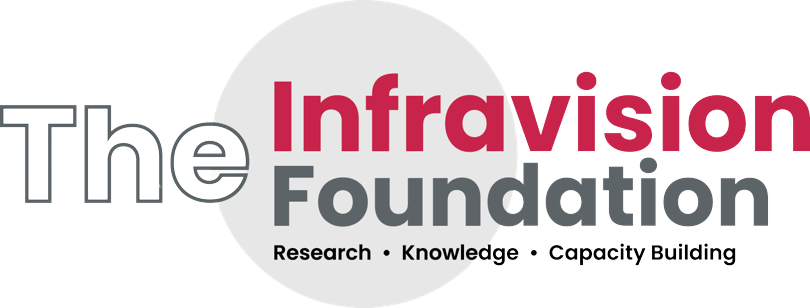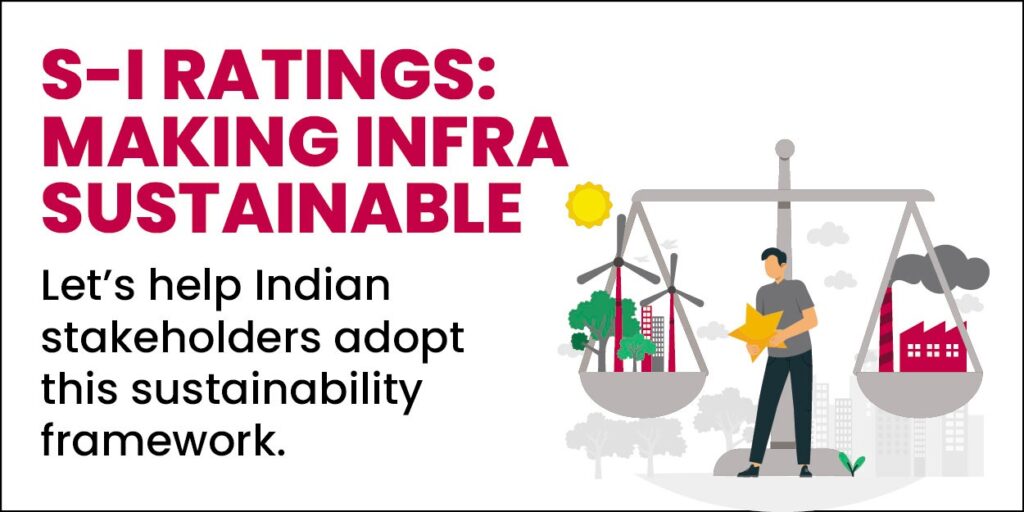India’s ongoing economic transition will make it a $5 trillion economy by 2026-27 and possibly the third-largest global economy soon. This remarkable growth hinges on substantial investments in infrastructure, spanning roads, airports, ports, railways, energy, etc. The National Infrastructure Pipeline (NIP) outlines an investment of INR 111 lakh crores by 2025. These investments carry significant economic potential, with a rupee spent on infrastructure yielding a potent multiplier effect of 2.45 in the following year, and 3.14 in subsequent ones.
The Government is also equally committed to India’s environmental and social (E&S) goals. India’s Nationally Determined Contributions (NDCs) commit to reducing the emission intensity of GDP by 45% by 2030 over 2005 levels. India has also committed to Net Zero emissions by 2070 and is a signatory to the Sustainable Development Goals (SDGs) to be met by 2030.
An inherent flipside of infrastructure development is its significant negative E&S impact, creating conflict with India’s NDC and SDG goals. For instance, cement and steel are amongst the largest emitting sectors and could increase their carbon emissions six-fold by 2050. Large-scale infrastructure development will likely exacerbate India’s climate risks and socio-economic vulnerabilities. Climate-related risks such as increasing intensity of rains and landslides are already visible and the debate about ‘infrastructure at what cost’ has already begun.
However, economic growth can still be achieved without compromising on E&S goals by adopting a sustainable infrastructure development model. Institutions such as the IFC and ADB have their own infrastructure project assessment frameworks for determining their E&S risks. These, however, are adopted only by projects they fund and not by others. The current project development approach globally is compliance-led without considering the larger E&S goals.
The Infravision Foundation’s (TIF) research paper published in collaboration with Envint suggests an alternative approach, integrating sustainability considerations into the infrastructure project lifecycle, and objectively measuring project level impact through a ‘sustainability rating’ framework. Many other countries have adopted similar project-level sustainability ratings such as BREEAM, BCA Green Mark, Envision, GRESB, PIERS, etc. India needs to develop and adopt a sustainability rating framework to balance its aspirations and commitments.
The proposed sustainability ratings mechanism adds to the existing regulations and embeds E&S considerations in the project lifecycle. It outlines a ratings regulation mechanism including rating ownership and accreditation, applicability, adoption of ratings and the ratings process.
This research paper proposes S-I Rating, a sustainability ratings mechanism for infrastructure projects based on environmental and social Key Performance Indicators (KPIs) to help objectively assess the project’s sustainability considerations. The mechanism incorporates 102 KPIs across 15 themes. The themes covered include Access and Equity; Biodiversity and Ecology; Construction Activity, Emissions; Land Use and Efficiency; Materials and Resources; Risk and Resilience; Waste and Circularity; and Water Use and Management among others.
These KPIs range from the basics related to compliance (e.g., Environmental Management) to aspirational (e.g., carbon mitigation plans). The responses could range from ‘not met’ to ‘full compliance’. Each of the KPIs has a weightage and based on the responses and the weightages, a ratings score is generated.

Such a mechanism will likely benefit all the stakeholders. It will enable governments and project sponsors to make ‘go no-go’ decision-making based on sustainability parameters, minimize stakeholder conflicts and conserve common property resources. Developers will be able to access responsible investors and minimize long-term E&S risks. It will provide investors with transparent risk assessment and efficient capital allocation. Finally, it will improve the user experience.
Implementation of S-I Ratings mechanism needs a robust institutional framework with clear roles and responsibilities. TIF’s research paper recommends the creation of a ‘Sustainable Infra Development Cell’ (SIDC) under the aegis of the National Bank for Financing Infrastructure and Development

(NaBFID) to act as the owner & promotor for the administration, developing the process and promotion of adoption of such ratings. As the principal Infrastructure Development Finance Institution, NaBFID may be the appropriate body to take forward the implementation of the sustainability ratings. The SIDC would create an ecosystem of accredited independent ‘S-I Ratings Service Providers’ (SIRPs), to assess individual projects.
With India’s economic growth strongly linked to infrastructure development, the right balance between the nation’s economic, environmental, and social goals is critical. A sustainability ratings mechanism for infrastructure projects is the likely solution.
By Nitin Zamre
COO, The Infravision Foundation



